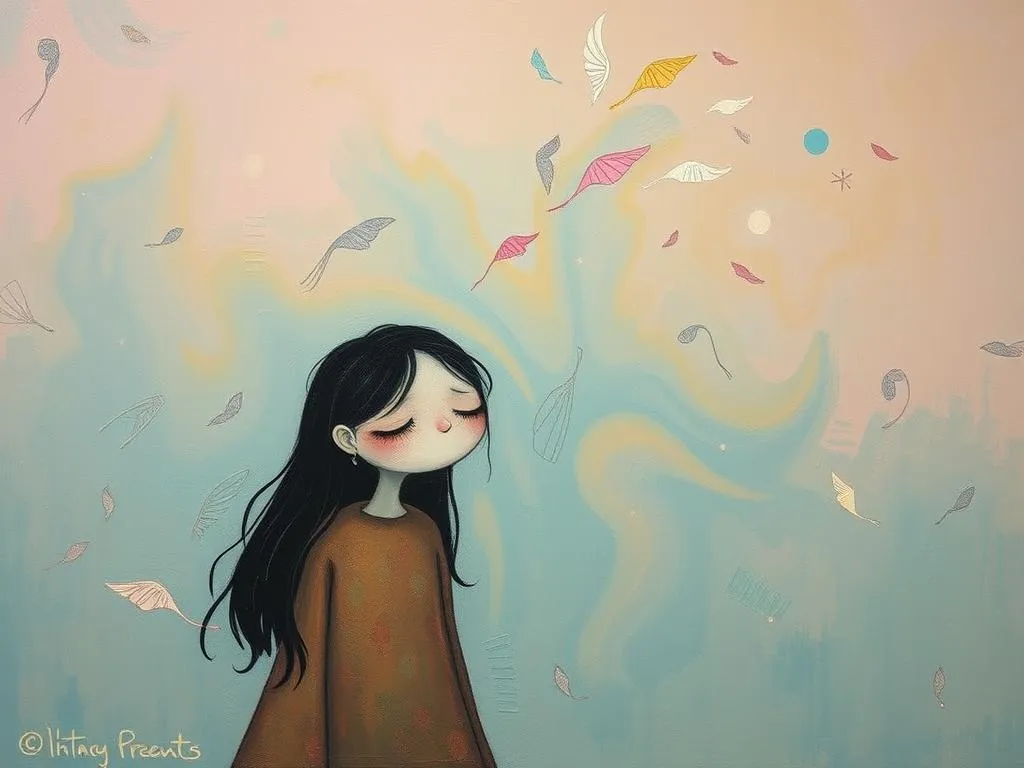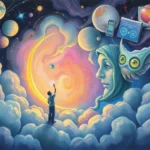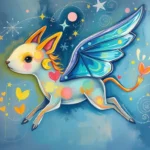
Have you ever woken up from a dream drenched in sadness, the remnants of tears still clinging to your consciousness? Dreams, those shadowy realms of our subconscious, often serve as mirrors reflecting our innermost emotions. While joy, excitement, and adventure are frequently celebrated in our waking lives, the exploration of sad emotions in dreams can be equally profound. They whisper secrets about our fears, losses, and unfulfilled desires, urging us to confront what we might be avoiding.
Understanding the significance behind these dreams can lead to transformative insights. This article will take you on a journey through the symbolism of sadness in dreams, explore common scenarios that evoke these emotions, and ultimately guide you toward personal growth and healing. So, grab a cozy blanket and settle in as we navigate the complex landscape of sad emotions in dreams.
The Melancholic Palette: Symbols of Sorrow
Dreams often employ a rich tapestry of symbols to convey our emotional landscape. Understanding these symbols can illuminate the deeper meanings behind our experiences. When sadness surfaces in dreams, it can manifest through various key symbols:
-
Water: Often representing tears or emotional turmoil, water can symbolize a sense of overwhelm or the need to cleanse oneself of past experiences. A flood may indicate that emotions are spilling over, while calm waters could suggest a need for reflection.
-
Darkness: A common backdrop in dreams associated with sadness, darkness can signify feelings of isolation, depression, or confusion. It may represent a phase in life where one feels lost or unable to find a way forward.
-
Broken Objects: Whether it’s a shattered mirror or a broken clock, these symbols often reflect feelings of loss or the inability to return to happier times. They can represent a fractured sense of self or disrupted plans.
-
Animals: Specific animals in dreams can embody certain emotions. For example, a lone wolf may symbolize feelings of abandonment, while a caged bird might represent yearning for freedom from emotional constraints.
-
Dying or Dead Figures: Dreams featuring deceased loved ones or dying entities often evoke deep sadness. These figures may symbolize unresolved grief or the need to let go of something that no longer serves you.
By recognizing these symbols, you can begin to unravel the layers of your dreams, revealing the emotional truths they hold. Ask yourself what these symbols mean to you personally, as their significance can vary greatly based on cultural contexts and individual experiences.
Echoes of the Heart: Scenarios of Sadness
To better understand how sadness can manifest in dreams, let’s explore a few common scenarios. Each one offers a lens through which to examine your own emotional experiences and responses in waking life.
1. The Endless Goodbye
Imagine dreaming of a loved one who is leaving, perhaps boarding a train or stepping onto an airplane. No matter how hard you try to hold on, they slip away, leaving you feeling abandoned. This dream often reflects feelings of loss or fear of separation. It may arise during transitions in life, such as a significant move or a relationship change, urging you to acknowledge your emotions surrounding attachment and letting go.
2. The Forgotten Celebration
In this dream, you arrive at a party only to realize you’ve forgotten the details—no one remembers you, and the atmosphere feels cold and distant. This scenario signifies feelings of rejection or inadequacy. It can stem from situations in which you feel overlooked or unappreciated, urging you to confront these feelings of unworthiness and seek connection in your waking life.
3. The Fractured Mirror
You find yourself gazing into a mirror that reflects a distorted, sad version of yourself. This dream often points to feelings of self-doubt or low self-esteem. It may serve as a reminder to nurture self-acceptance and to confront the negative beliefs you hold about yourself. The broken mirror signifies the need to piece together your identity and embrace your authentic self.
4. The Lost Child
In a heart-wrenching dream, you search desperately for a child—a symbol often representing innocence, joy, or lost dreams. This scenario may evoke profound feelings of longing or regret. It can reflect aspects of yourself that you feel have been neglected or abandoned. Exploring this dream can lead to discovering what parts of your life need nurturing and attention.
5. The Unfinished Letter
You find yourself writing a letter to someone you’ve lost, pouring your heart out only to wake up before you can send it. This scenario may highlight unresolved feelings of grief or the need for closure. It suggests that you may still be processing your emotions and emphasizes the importance of expressing what’s left unsaid in your waking life.
Each scenario invites you to reflect on the emotions at play in your life. Are there unresolved feelings or situations that require your attention? By delving deeper into these experiences, you can gain valuable insights into your emotional well-being.
Transforming Tears into Triumph: A Path to Personal Growth
Dreams of sadness, while deeply uncomfortable, can serve as powerful catalysts for personal growth. Each tear shed in your dream can wash away layers of emotional baggage, allowing you to emerge renewed and more resilient. Here are some practical steps to harness that potential for healing:
1. Journaling Your Dreams
Keep a dream journal to record your dreams upon waking. Take note of the symbols, emotions, and scenarios present. Writing down your thoughts can help you process and understand the underlying messages your subconscious is trying to convey.
2. Embrace Vulnerability
Allow yourself to feel and express your emotions fully. Whether through creative outlets like art, writing, or even talking to a friend, acknowledging your feelings can lead to healing. Remember, vulnerability is a strength, not a weakness.
3. Seek Closure
If your dreams revolve around unresolved relationships or past traumas, consider finding ways to seek closure. This could involve writing a letter to someone you’ve lost, engaging in therapy, or even participating in a ritual that helps you say goodbye.
4. Practice Mindfulness
Engage in mindfulness practices to stay present with your emotions. Meditation, deep breathing exercises, or even gentle yoga can help ground you and provide space for self-reflection. These practices can facilitate emotional release and help you navigate sadness with grace.
5. Explore Your Support System
Reach out to your support network—friends, family, or professional counselors. Sharing your dreams and emotions can create a sense of connection, reminding you that you are not alone in your feelings. Community can be a balm for the soul.
By turning your focus inward and addressing the feelings that arise from your dreams, you can embark on a journey toward emotional healing and resilience. Remember that every tear shed is an opportunity for transformation.
A Powerful Reflection
In the grand tapestry of life, sadness is but a thread woven into the fabric of our experiences. Dreams that evoke sorrow can serve as illuminating guides, urging us to confront our emotions and embrace the complexities of our human experience. While the sadness may feel overwhelming at times, remember that it is not the end; rather, it is a powerful pathway toward understanding, growth, and ultimately, renewal.
As you continue to explore the depths of your dreams, let each drop of sorrow remind you that even the heaviest rain can nourish the seeds of your soul, allowing them to bloom anew. Embrace the journey, for it is in the depths of our emotions that we often find the light that guides us home.







